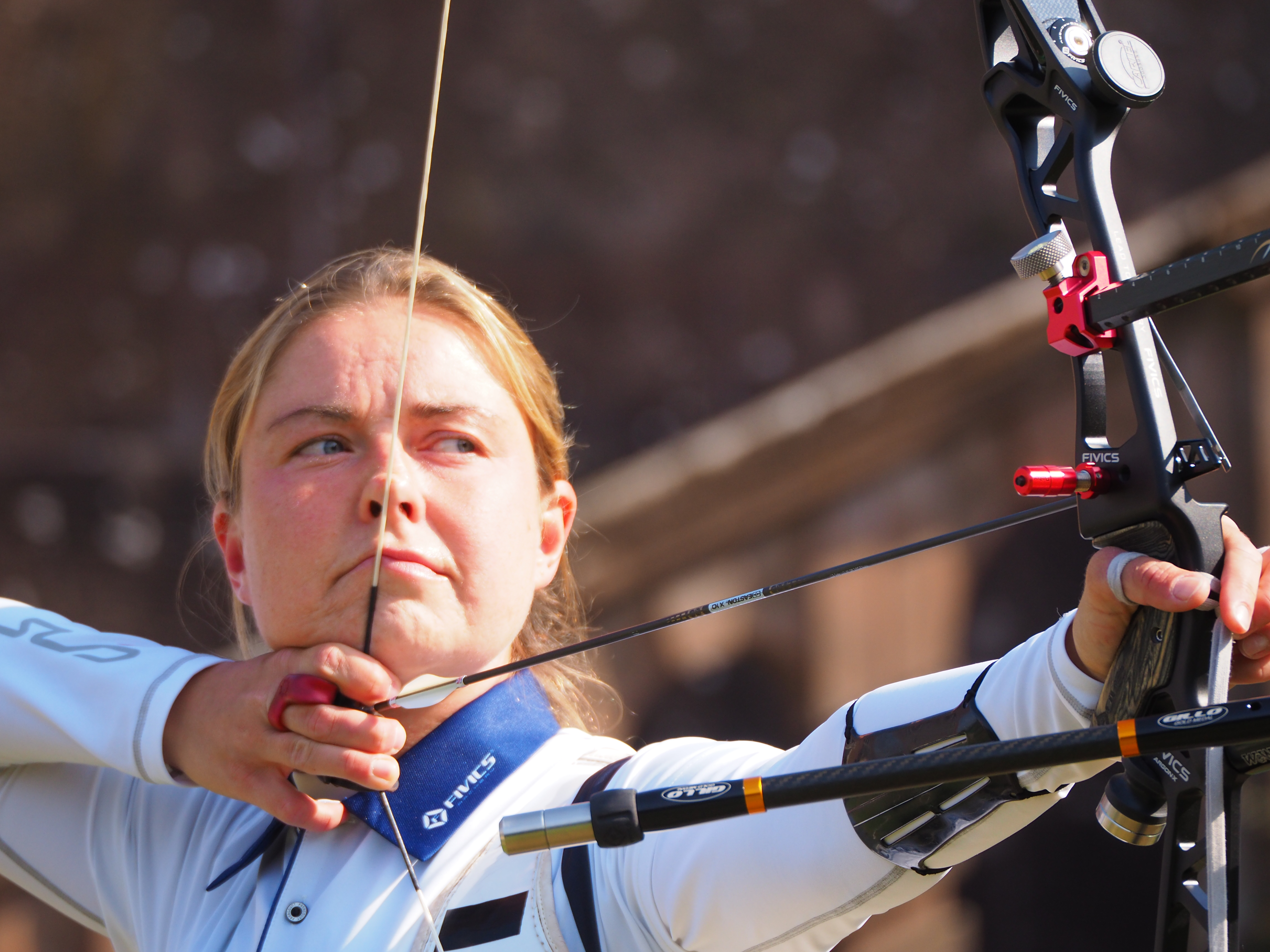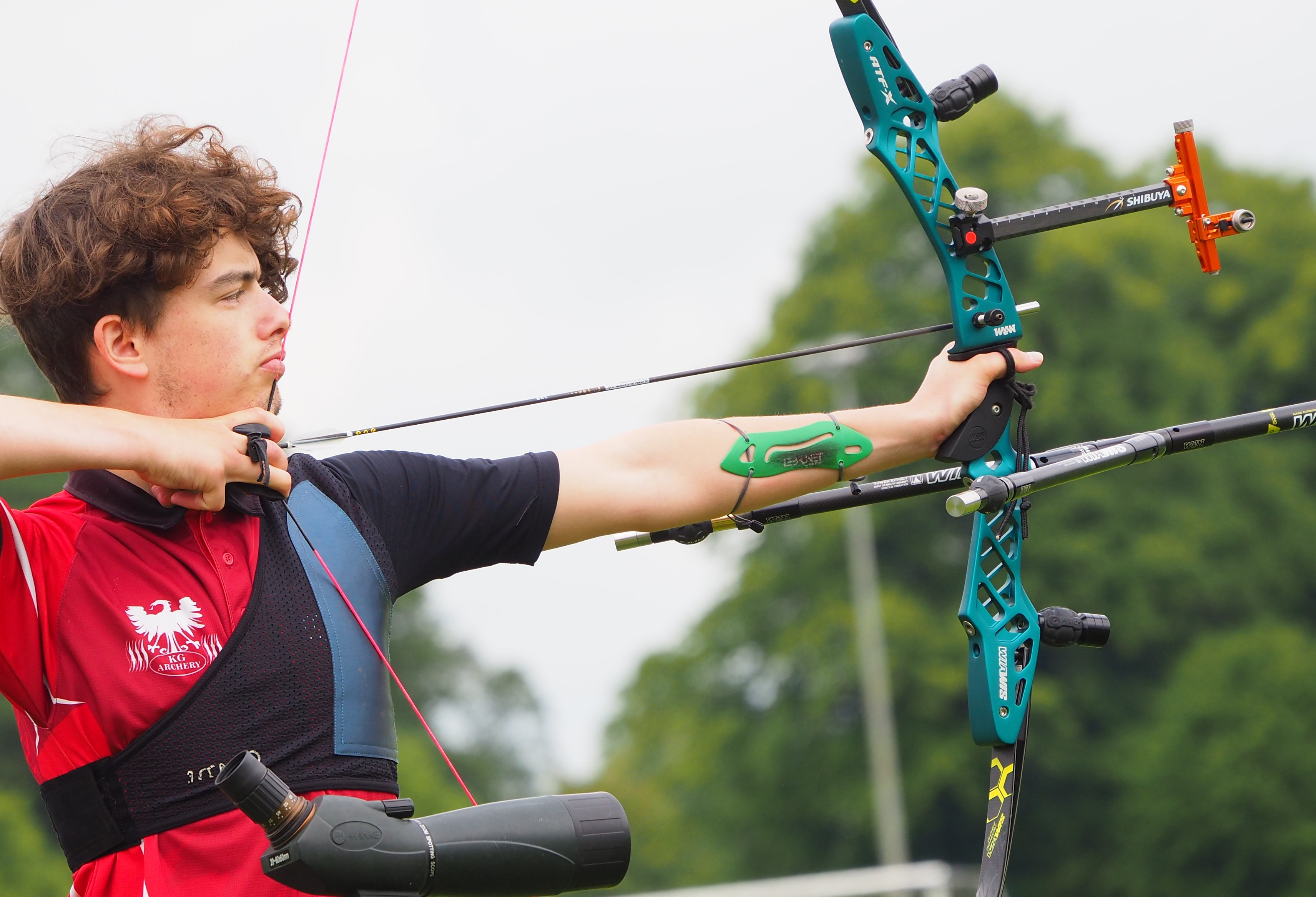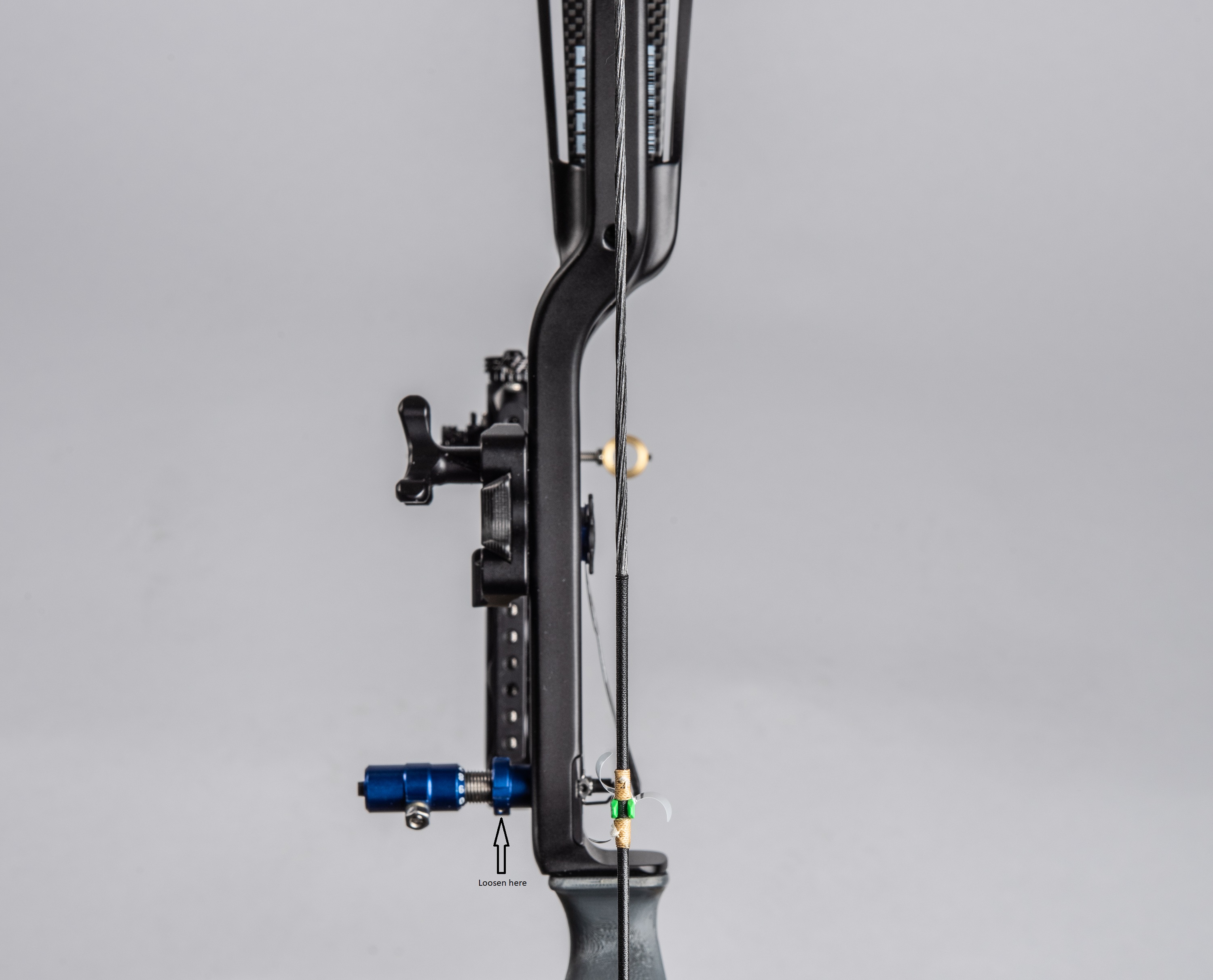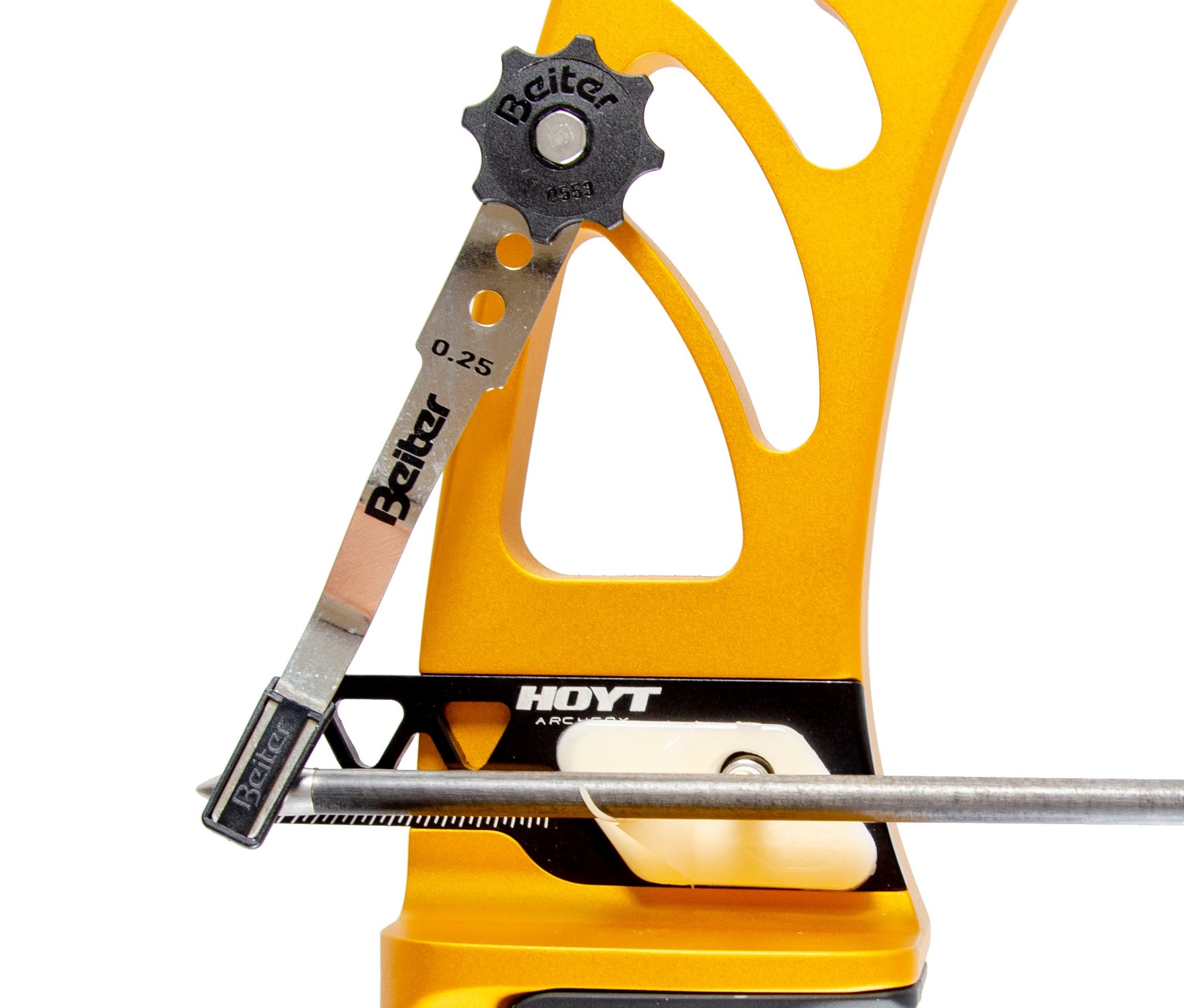Reference points are a way to help improve scores and groupings by increasing the consistency of what we do, resulting in the same shot sequence every single time, as Adam from Wales Archery explains.

An anchor point in archery is a consistent reference point on your face or neck that you use to maintain a consistent draw length and release. This point ensures that the bowstring is always pulled back to the same position, which is crucial for accuracy and consistency in your shots.
Some common anchor points are:
Your anchor point, no matter the bowstyle that you're shooting, is absolutely crucial. It directly affects your draw length, which in turn can affect the bow weight you are pulling. Whether you are shooting longbow, barebow, or freestyle, choosing a point that you can replicate every single time is important.
The string picture (shown below) is where you see the string when at full draw somewhere on the bow, and is an important reference point.
Making sure your sting picture is in the same place every single time will lead to better groupings. Where the string picture is down to the individual, some of the most used places are alongside the riser, next to the sight ring, or even in the middle of it.
The clicker needs to be carefully set up and your anchor, posture, alignment, and head position all need to be set in the same repeatable location. When this is done, if any discrepancies are made during the shot sequence, this will result in the clicker going off too soon – sometimes even before the anchor is reached, or you could come to full draw and struggle to come through the clicker. If either of these happens, the best course of action is to come down with the bow and reset the shot sequence.

These act as a reference point for your mouth (kisser) and nose (nose button), which work in a similar way. They are both installed onto the string very easily and are generally inexpensive to purchase, whilst offering great results. They both help to keep your head in the same position, but care must be taken to set the headfirst then draw to the reference. Don’t move your head to meet the kisser or nose button.
By understanding and implementing the principles of anchor points, you can significantly improve your accuracy and consistency. Whether you choose a jaw, ear, or nose anchor, or use additional tools like the string picture, clicker, nose button, or kisser, the key is to find a method that works best for you and allows you to maintain a repeatable shot process.
Thanks to Adam at Wales Archery.